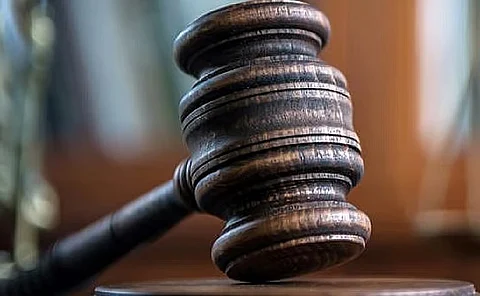

The Supreme Court (SC) on August 4, 2025 upheld the powers of pollution control boards to impose restitutionary and compensatory damages as an ex-ante measure to prevent potential environmental damage.
A bench comprising Justices Pamidighantam Sri Narasimha and Manoj Misra held that under provisions of Section 33A of the Water (Prevention and Control of Pollution) Act, 1974 and Section 31A of the Air (Prevention and Control of Pollution) Act, 1981, pollution control boards are constitutionally and statutorily empowered to levy damages for actual or potential environmental harm.
“The Pollution Control Boards can impose and collect as restitutionary and compensatory damages fixed sums of monies or require furnishing bank guarantees as an ex-ante measure towards potential environmental damage in exercise of powers under Sections 33A and 31A of the Water and Air Acts,” said the order.
The SC set aside the order passed by the High Court of Delhi on January 23, 2012.
The Delhi Pollution Control Committee (DPCC) filed an application appealing against the judgment of the High Court, holding that it is not empowered to levy compensatory damages in exercise of powers under Section 33A of the Water Act, 1974 and Section 31A of the Air Act, 1981.
The Supreme Court on July 29, 2025, directed the Tree Authority of the Municipal Corporation of Greater Mumbai (MCGM) to proceed further with the application of the project proponent (MCGM) seeking permission for felling of the trees to initiate tunnel work as part of the Goregaon-Mulund Link Road Project (GMLR Project).
The court clarified that no trees should be actually felled without its permission. The SC directed the project proponent to place on record the report of the experts showing that no other alternative other than felling of 95 trees for launching shaft to lower the tunnel boring machine (TBM) is available.
The project proponent should also place on record the plan for compensatory afforestation so as to compensate for the loss of trees that would be felled for digging the shaft. The report and the plan for the compensatory afforestation should be filed along with the affidavit by August 7, 2025 and the matter will be taken up on August 12, 2025.
“No doubt that the protection of environment is important, as has been consistently held by us that the environmental resources are held in trust for the future generations. However, at the same time, the necessity for carrying out development activities, cannot be ignored,” the bench comprising Chief Justice B R Gavai and Justice K Vinod Chandran said.
The Tree Authority of the MCGM filed the application. It was necessitated in view of the order passed by the SC on January 10, 2025, which directed that the Tree Authority will not grant permission for felling of trees within the Aarey Colony area without permission from the SC.
The application stated that the MCGM is undertaking the GMLR Project so as to strengthen the connectivity between the eastern and western suburbs of Greater Mumbai.
It also stated that the MCGM has developed three major East-West Link Roads to improve road connectivity: Santacruz-Chembur Link Road, Andheri-Ghatkopar Link Road and Jogeshwari-Vikhroli Link Road.
The need for the GMLR Project arose as a part of the same project, which has been approved as per the Development Control and Promotion Regulation Plan, 2034.
Further, a 6.62 km tunnel road is envisaged for the GMLR Project to strengthen the connectivity from Western Express Highway at Goregaon to the Eastern Express Highway at Mulund. The project aims to reduce the travel time by almost one hour between Mulund and Goregaon.
For digging the tunnel, the work of launching the shaft (a pit structure of about 200 m length, 50 m width and 35 m depth) is required to be done so as to lower the TBM underground and initiate the tunnel work.
Mukul Rohatgi, counsel appearing on behalf of the Tree Authority, submitted that though the Authority had proposed felling of 1,094 trees initially, taking into consideration the immediate necessity to launch the shaft and lower the TBM, permission at present is required to be granted only for 95 trees.
Rohatgi further submitted that though the area does not fall in the Aarey Colony, and falls within the Film City area, the present application has been moved as a matter of abundant precaution.
The petitioners opposed the application. Their counsel submitted that a statement was made in the affidavit filed by Maharashtra state on January 8, 2025. It noted that there is no proposal for felling of any further trees at the moment.
A perusal of the affidavit filed by the state dated January 8, 2025, revealed that the statement made by the Maharashtra government was regarding the proposal of the Mumbai Metro Rail Corporation Limited’s construction of a car depot at the Aarey Colony under the Mumbai Metro Line-3 Project.
The present project is a different one, the SC said.
The National Green Tribunal (NGT) on August 4, 2025, directed authorities to file their reply on the state of water bodies in Delhi. The Central Pollution Control Board, Delhi State Wetland Authority and Delhi Pollution Control Committee had sought time to file a fresh response on the matter.
The tribunal on August 4, 2025, directed the matter to be listed for September 26, 2025, along with another matter on the issue of preservation and rejuvenation of water bodies in Delhi.
The court took up the matter suo motu on the basis of a news item which appeared in the Times of India on March 12, 2025. The news article mentioned that a total of over 142 relatively small size water bodies in Delhi have either been completely built up (20 per cent), turned into parks (nine per cent) or filled with contaminated water (12 per cent).
The authorities’ reply was confined to 10 major wetlands of Asola, for which steps were already stated to be taken. But there was no effective reply on other water bodies, the NGT pointed out.